Flame Light Relight - Science Magic
There’s a lot of chemistry behind the simple lighting or extinguishing of a flame. Would you believe us if we told you that you could […]
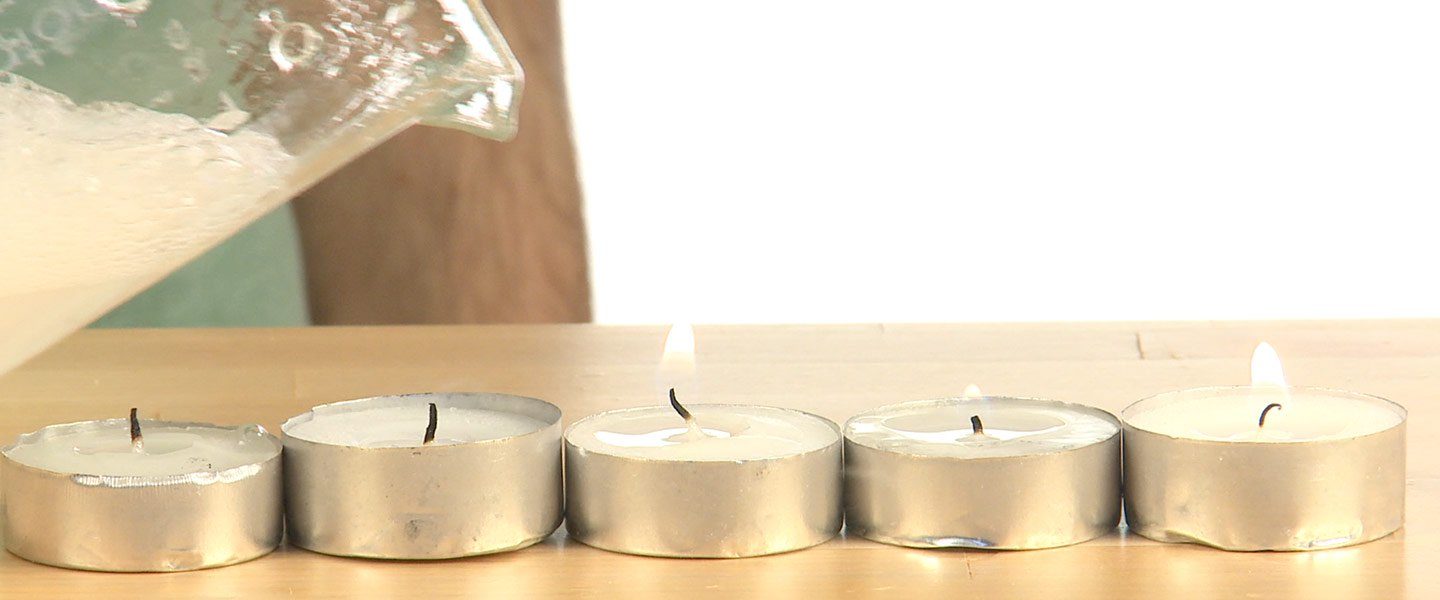
Carbon dioxide (CO2) is a gas that humans interact with every day. For instance, you exhale it from your lungs. Drive a vehicle and it’s in the engine exhaust. It enables plants to perform photosynthesis to make food. It’s heavier than air. It can extinguish certain types of fires. You may have known all that, but here’s another: you can get very creative with it when putting out a flame.
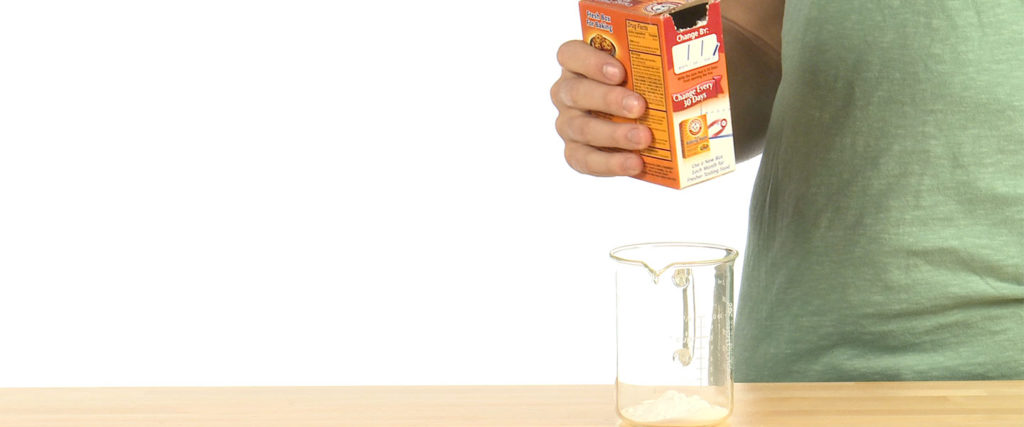
Place the clear container on the cookie sheet and dump a couple of tablespoons of baking soda into it.
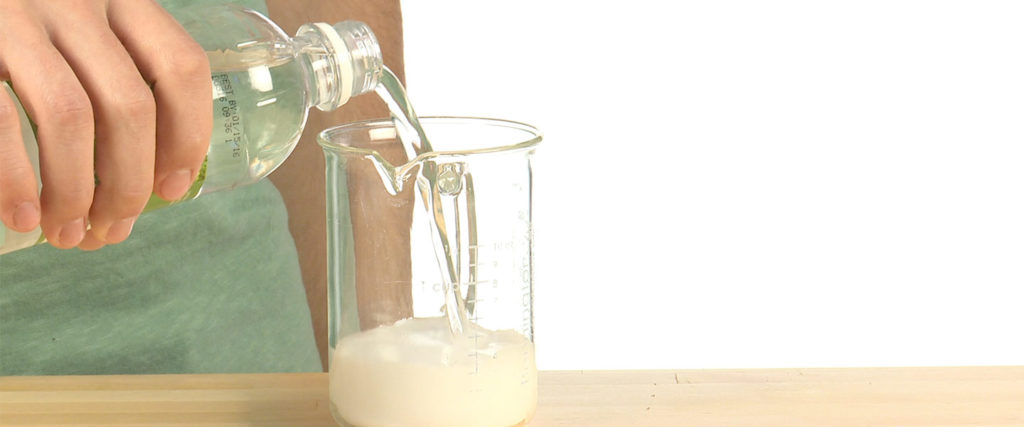
Pour some vinegar to the container with the baking soda. Whoa… that’s a seriously foaming reaction! That’s OK – you want it to overflow the container a little.
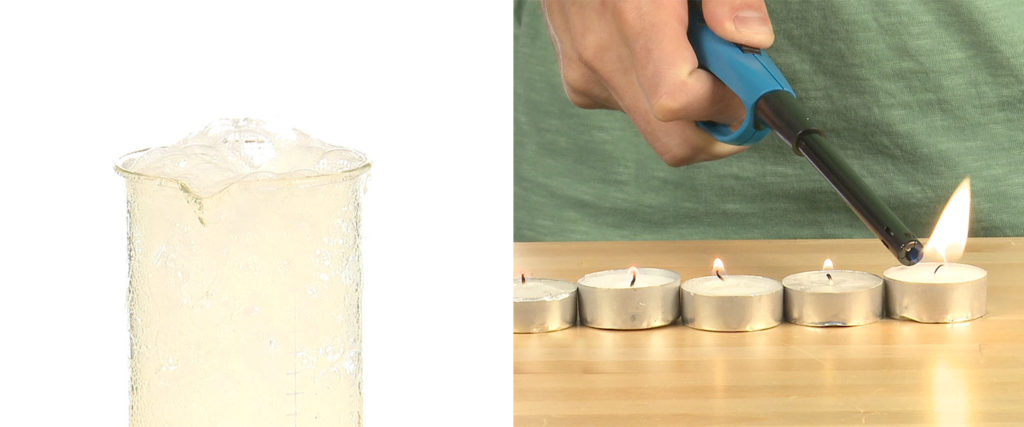
Let the reaction and the foaming calm down while you light the candle(s).
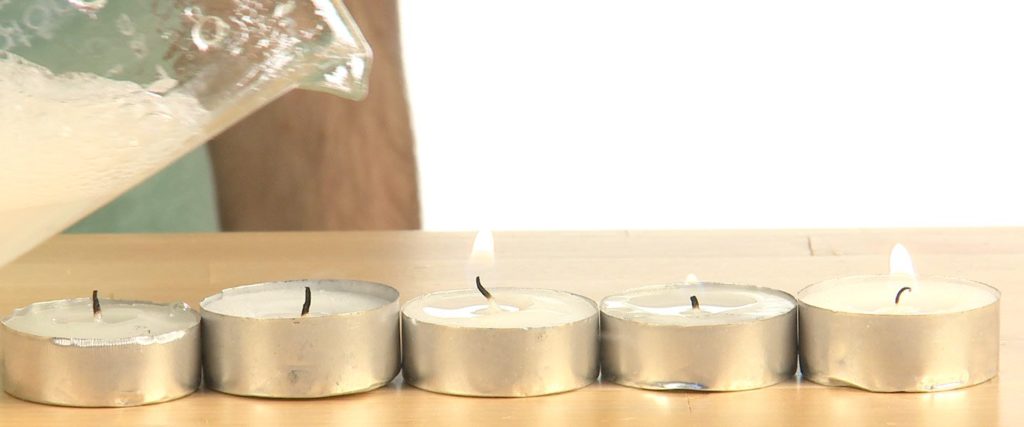
Hold the container next to and above the flame. Slowly tilt the container and “pour” just the gas from the container onto the flame. Don’t pour the liquid. The candle flame is no more!
A fire requires oxygen (O2), fuel, and heat to burn. These three components are called the fire triangle or the combustion triangle. Remove any one of the three components, and the fire goes out.
Baking soda (sodium bicarbonate) is a base and vinegar (acetic acid) is a weak acid. When they combine, the immediate reaction creates carbonic acid. However, carbonic acid is very unstable and it quickly decomposes into carbon dioxide (CO2) and water (H2O). The bubbles you saw the container were full of CO2. There was so much of it, in fact, that it pushed all other gasses out of the container and filled it completely. Since CO2 is heavier than air, the container was filled with it and nothing else. As you tilt the container, you literally pour the CO2 onto the flame. That means air can’t get to the flame and it goes out for lack of oxygen.
It’s important to handle the container carefully. You can lose all the CO2 by spilling it and never even know it. Redo the activity but vigorously stir the “empty” part of the container with a spoon before pouring it onto a flame. You probably pushed most of the CO2 over the sides of the container when you stirred. The flame stays lit because air replaced the spilled CO2 in the container.
CO2 is colorless and odorless and sinks to low places in a container because it’s heavier than air. A worker needs to be careful when dealing with CO2 because it can fill a large space and push out all the oxygen. If the worker has no respirator and enters the space, it can be a life-threatening situation.